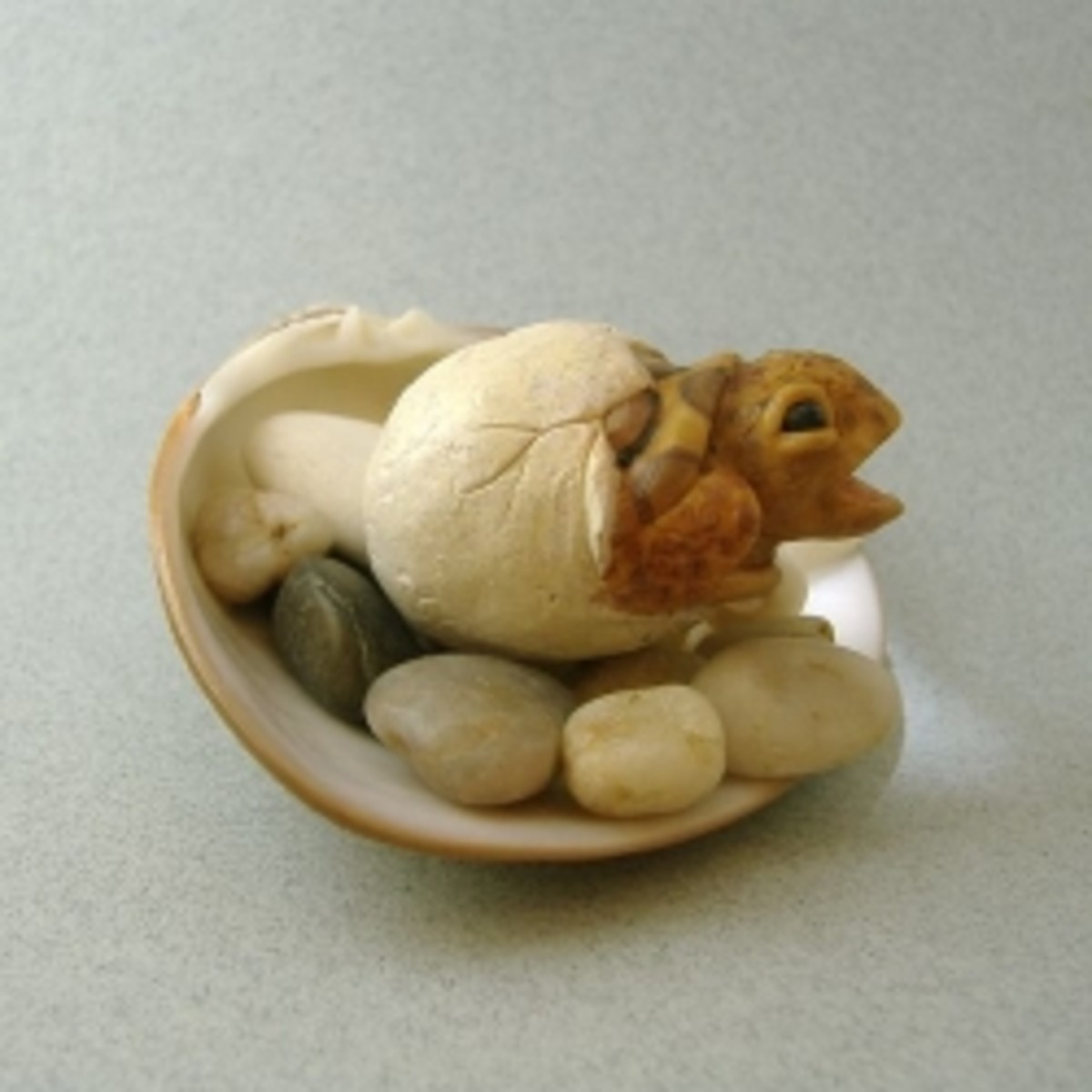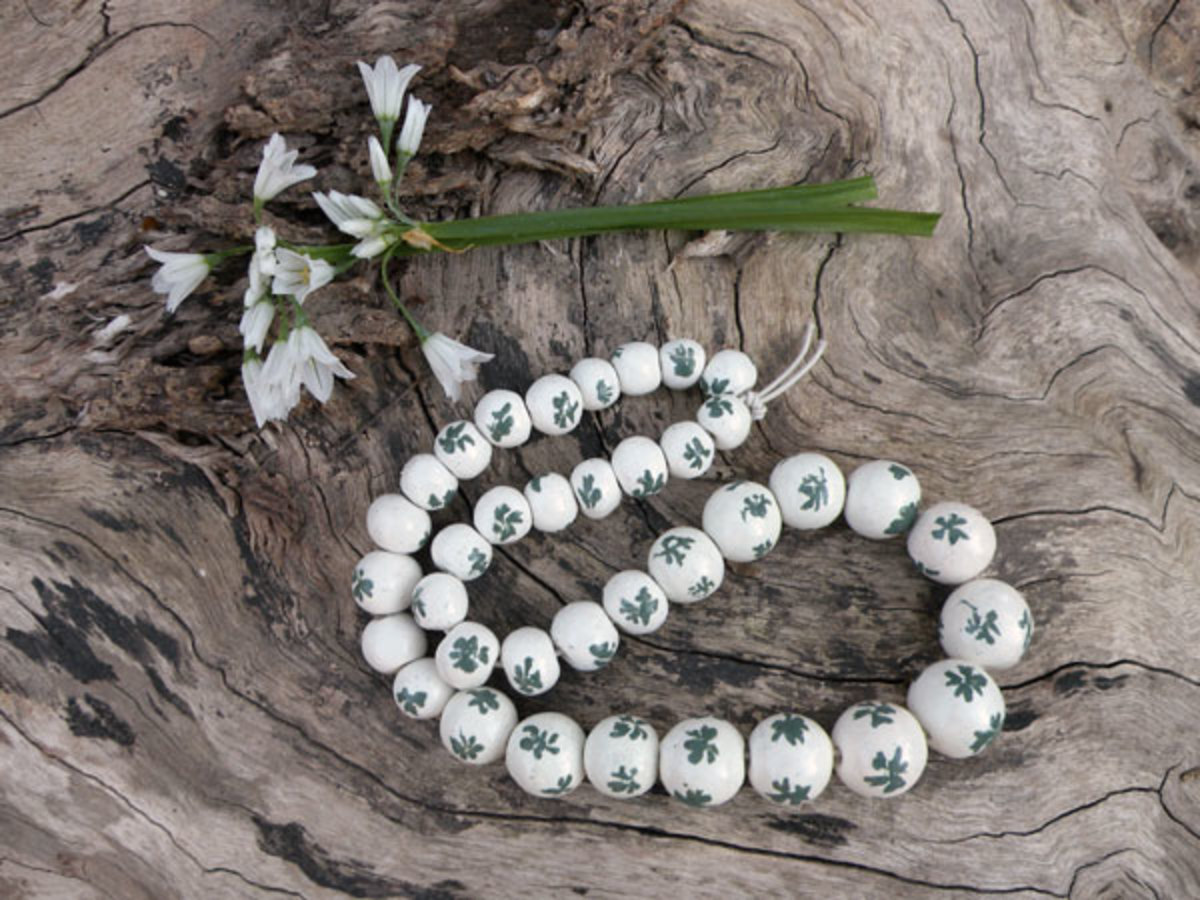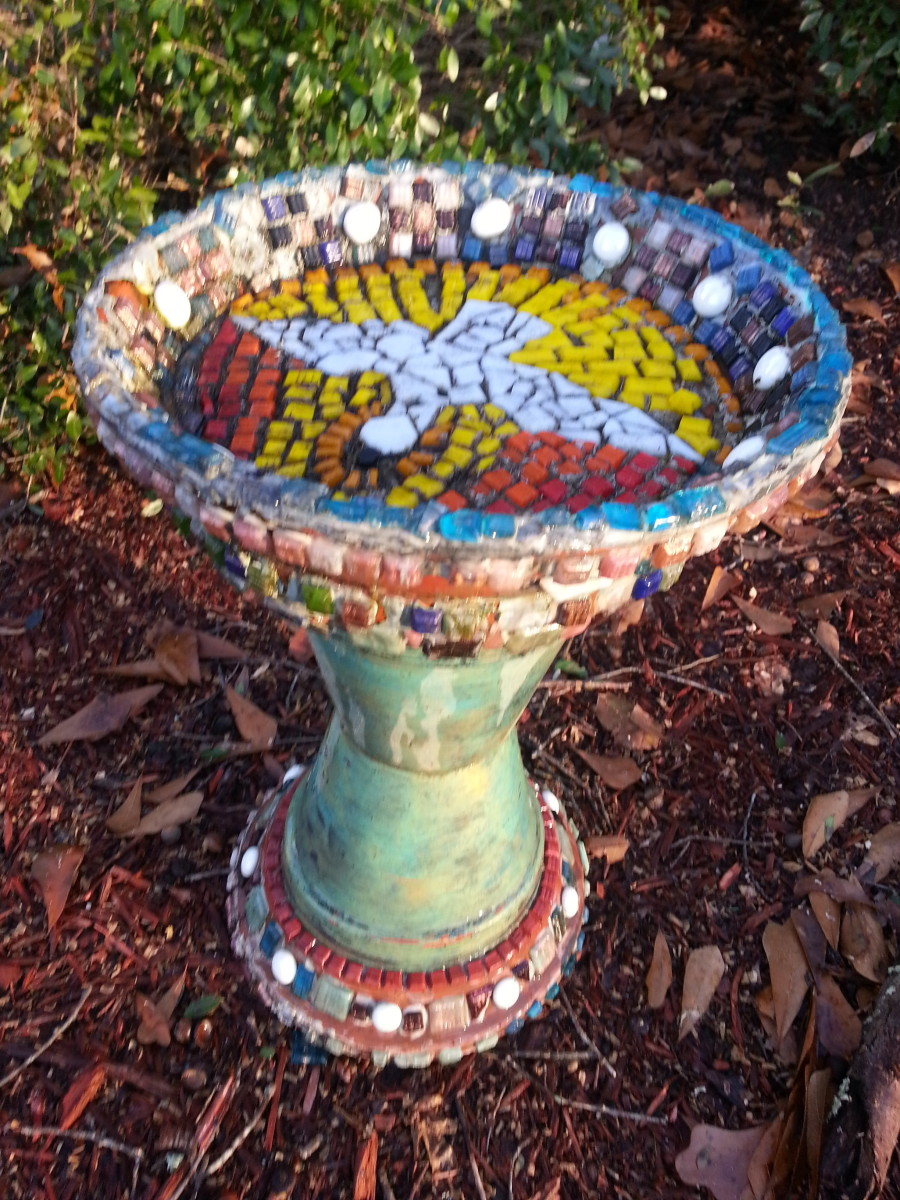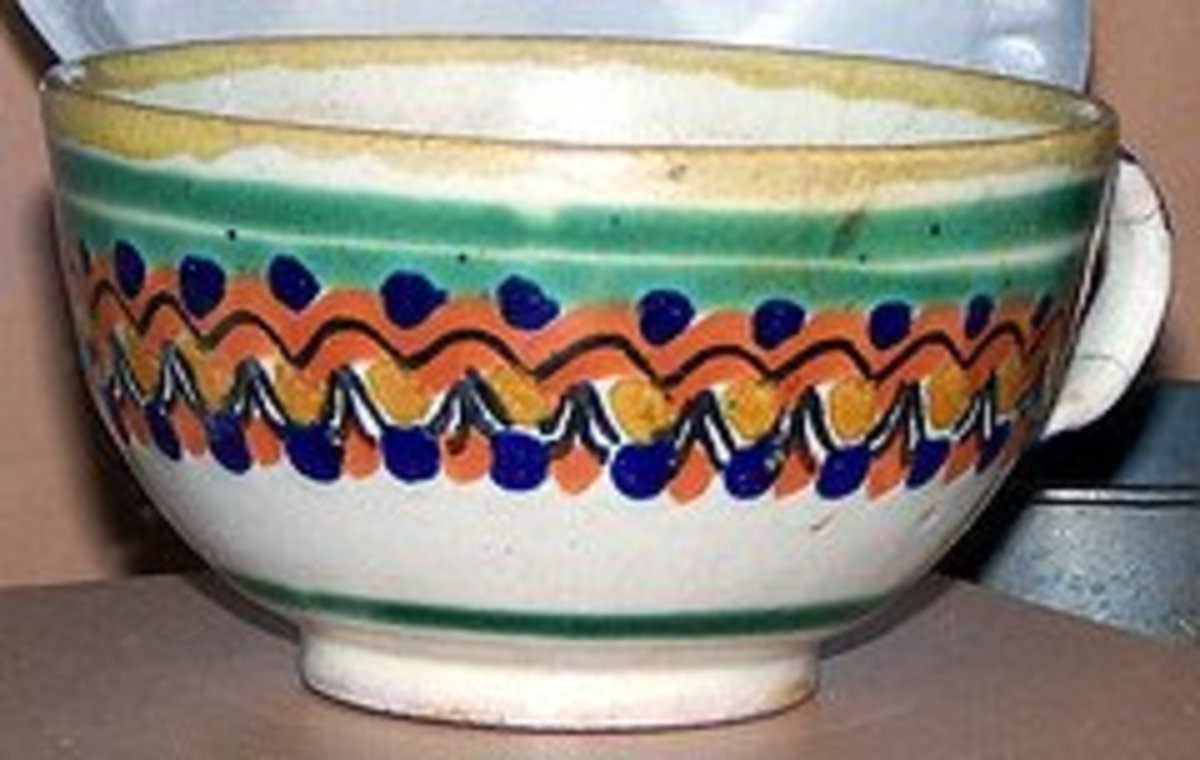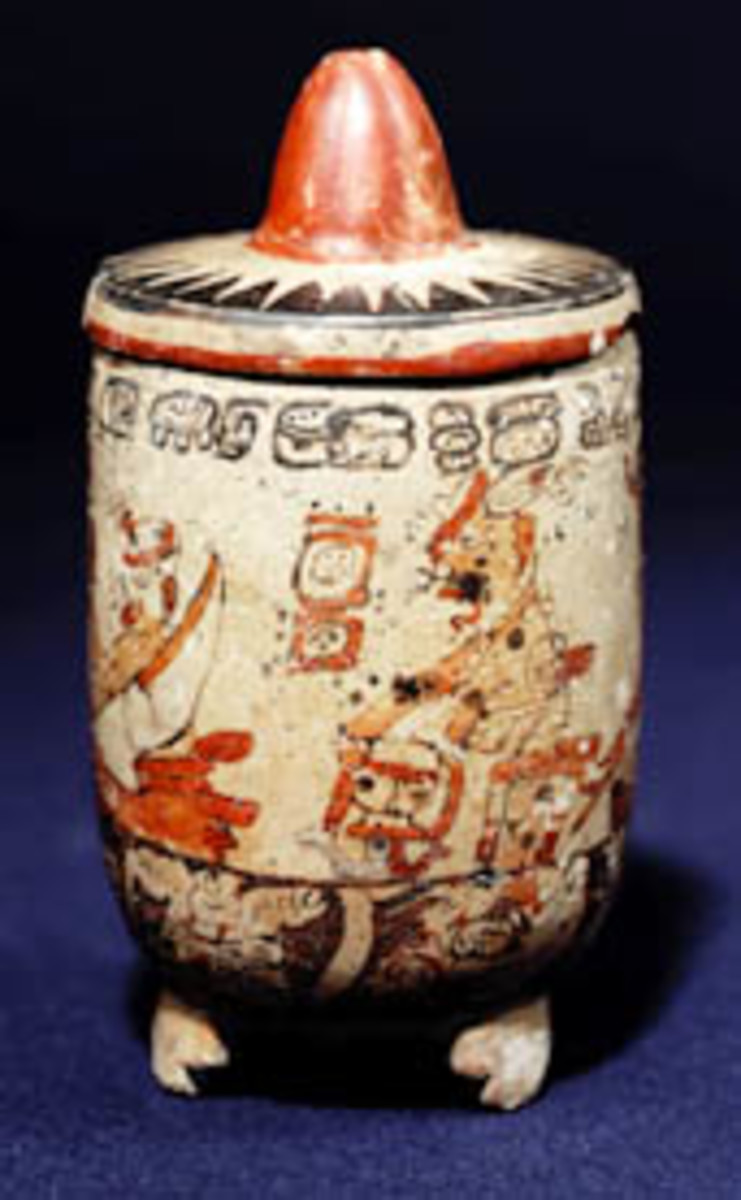How to Make Pottery - How to Make Ceramics – Types of Clays
Working with Clay is Natural to Humans
If it was possible to isolate a baby boy and a baby girl from contacts with other humans, with time you will find that they have instinctively learnt by themselves the following:
- They will invent a god to worship
- They will mold clay
- They will invent a language
- They will attempt to put up a shelter
- They will establish a pecking order and shall protect each other.
It's alright for you to disagree with the above statements, but working with clay is a natural thing to humans. Clay is a very challenging art media and yet even children use it. Man must have been using clay since when he learnt how to use tools more than 2.6 million years ago. The North American Indians are known to have used bonfires kilns to burn clay pots earlier than 30,000 B.C.
Difference between Pottery and Ceramics
The word pottery is from the word ‘clay pot’. A clay pot is an item that has a use. The word ceramic is from the word ‘keramos’ which means clay. There should be no difference between ceramic and pottery, but there is a difference. Ceramics refers to all inorganic materials, such as clay, cement, glass, that will harden permanently after heating to high temperatures. Pottery is all about permanent hardening of clay. It’s no wonder to find pottery being thought of a less sophisticated clay-work done by primitive artists and amateurs whilst ceramics being thought of as a higher grade clay-work done by professionals.
Perception
Whilst in the real sense there is no difference between pottery and ceramics, the perception in people’s mind is that ceramics items are made to be visually appealing, and pottery items are made to be functional, useful and serve a purpose in our daily life.
Clay Body
When you make pottery or ceramics, you first have to make a clay body. A clay body is made from several combinations of clays, silica and feldspars. One crucial characteristic of clay is plasticity. Plasticity allows clay mixed with water to be coaxed into any shape you want. When the shape so formed dries out, they hold in shape, and when the shape is heated, it will become dense and permanently hard never to change again unless broken.
Types of Clays
There are five types of clays based on their geological formation. These are
- Kaolin, also known as China Clay
- Ball Clay
- Stoneware Clay
- Fire Clay
- Common Surface Clay
Kaolins
Kaolins are also known as China clay. They are of two types, namely residual kaolins and sedimentary kaolins. Clay is formed from a continuous decomposition of igneous rocks with time. Kaolin is clay that has not been moved from the original position of formation. Kaolins are the purest of all clays. When fired, they fire the whitest and are thus used for the finest porcelain. Kaolins are less plastic and very rare. Kaolins are usually mined far below the surface of the ground by large mining firms. The sedimentary kaolins are indeed secondary kaolins that have been moved by water from where they were first formed. Sedimentary kaolins are more plastic than residual kaolins and are slightly yellow. Large deposits of kaolins are to be found in China and were first used in China long before anywhere else hence the name China clay. Wherever there is clay, there might have had kaolin. Kaolin will mature after heating past 1480 degree Celsius. It is very difficult to coax kaolin into a pot or a reasonable form because its plasticity is low and it’s very delicate. Addition of silica would just make things more difficult to work with. Addition of 4% Bentonite may aid in increasing plasticity.

Ball Clays
Ball clays are clays that have been moved from the spot they were formed mostly by water. Ball clays are fine grained. Ball clays have a lot of carbonaceous materials in them. These carbonaceous materials usually give ball clays the color gray and sometimes color brown and light blue. When fired, the carbonaceous materials will burn out living a white color. Ball clays are very plastic and will shrink a lot when fired. Ball clays are rare to find but are more common than kaolins. Ball clays will mature after heating them past 1300 degrees Celsius. Ball clays are mostly found by canals and rivers sides, basins and beds. In the early days, the ball clays were transported in cubes of 20 kilogrammes or so and it is during transportation that the corners of the cubes would round off forming balls, hence the name ‘ball clays’.
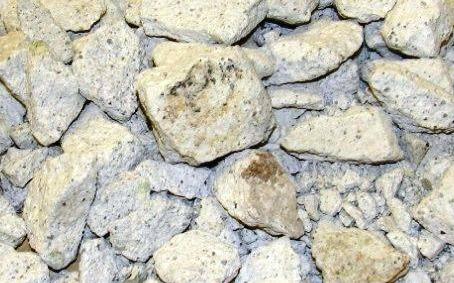
Fire clay
Fire clays are clays that have been moved a lot from point of formation by water and wind erosion. In the process they have picked metallic oxides and silica with them as well as carbonaceous materials. Fire clays are coarse grained and will fire in different colors depending on the source. Fire clays are abundant in many places, and especially on the upper strata of rocks as well as the top of the ground. These really are what many communities use for making bricks, roofing tiles, fireplaces, ‘primitive’ pots and containers. Fire clays will mature by firing them past 1200 degrees Celsius. When fired, fire clays will turn to rust red, light buffs, grays, and brown colors. Fire clays have a good workable plasticity but in the thoughts of a ceramist, the fire clays are heavy clays that are crude to work with for fine pottery and ceramics. A fire clay with high silica content is called flint clay and flint clays are very ideal for making large statues and figurines as it is easier to form the large statues with this type of clay.
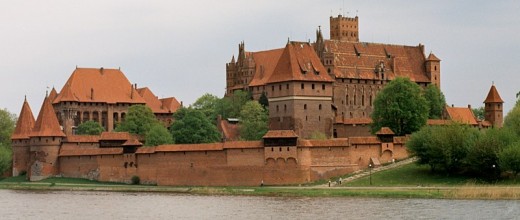
Surface Clays
These are the clays we all know about and you will find them just about anywhere. Chances are high you have surface clay in your backyard. These clays have been moved again and again by water and wind since formation. They have picked dirt and all manner of impurities along the way. This means that when fired, you can expect them to turn into any color. The surface clays will mature at lower temperatures (past 1050 degrees Celsius) than all other types of clay. In fact, these are clays that will melt low enough at 1100 degrees Celsius to form slip glazes such as the popular kaki glaze of Mashiko.
Stoneware Clay
Stoneware clay is natural occurring clay that has properties in between ball clays and fire clays in terms of plasticity, firing range, color, shrinkage and texture. Stoneware clays are extremely rare to find but nevertheless they are available to lucky potters and ceramists. If you can find a geologist who is familiar with your areas, he can be able to tell you if you have stoneware clay in your area. It’s very unlikely you will find a clay supplier who can supply you with natural stoneware clay.
How To Make Pottery or Ceramics
To make pottery or ceramics, you will need to make a clay body by combining different types of clays and other materials. A clay body will need the following kind of materials:
- Plastic material component for plasticity - use ball clays or other clays
- A flux material component for lowering the melting point of ceramic materials – use materials such as feldspar
- A filler component for reducing stickiness and shrinkage – use silica material as filler
Classification of Pottery and Ceramics
When you make pottery or ceramic, your ceramics can be classified as earthenware, stoneware or porcelain.
- Earthenware is fired to low temperatures of about 1050 degrees Celsius. Earthenware is porous and can absorb as much as 15% water to its weight. Earthenware is soft, chalky and breaks easily as well as leaking liquids. Since earthenware items are not fired high enough, they are less dense. Earthenware cup will chip easily at the brims creating good surfaces for germs and bacteria to grow
- Stoneware is fired to high temperatures of about 1250 degrees Celsius. Stoneware is only a little porous and can absorb about 2% to 5% water to its weight (if boiled in water). Stoneware is strong and durable and feels like stone. Most artists like stoneware due to the appeal of the stone texture.
- Porcelain is fired to high temperatures of about 1280 degree Celsius. Porcelain is not porous and can not absorb water, and if it will absorb water, this should not exceed 1% of its weight.
Examples of Clay Bodies
Here below are examples of clay bodies that are used to make porcelain, stoneware and earthenware. The variation can be different depending on the materials being used.
Porcelain Clay Body
- Kaolin – 25%
- Ball clay – 25%
- Feldspar – 25%
- Silica – 25%
(Fire to 1300 degrees Celsius)
Stoneware Clay Body
- Fire Clay – 60%
- Ball clay – 20%
- Feldspar – 10%
- Silica – 10%
(Fire to 1288 degrees Celsius)
Earthenware Clay Body
- Ball clay – 30%
- Common Surface Clay – 30%
- Fireclay – 30%
- Silica – 10%
(Fire to 1080 degrees Celsius)
Trying to learn how to make pottery or how to make ceramics without the assistance of a teacher is difficult and this article is not intended to replace a teacher.
The next article is on clay preparation.
If you have liked this article, and you would want this page to keep up and improved, you can help by purchasing some great items from Amazon by following Amazon links and widgets on this page. A free way to help would be to link back to this webpage from your web page, blog, or discussion forums.
The Author’s page is designed to help beginners and average readers make some money as an extra income to supplement what they may be earning elsewhere - details of which you can find in My Page, if you will.



